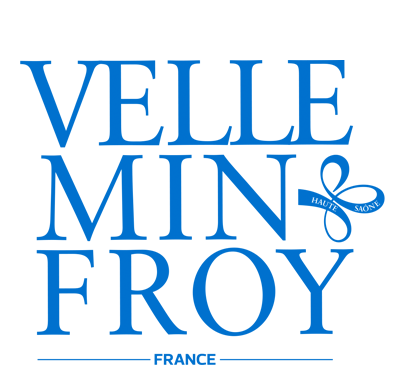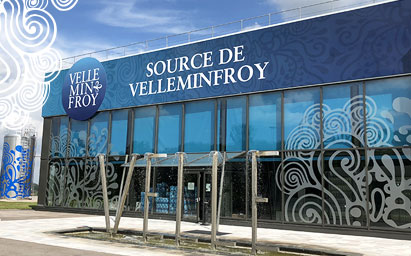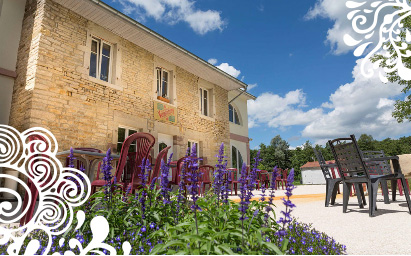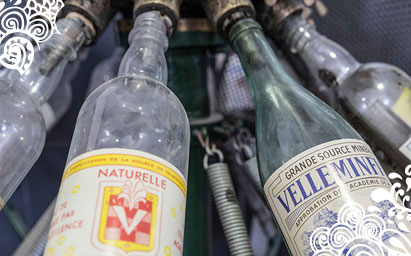An Imperial legacy
In 1828, Dr Jacquez discovered, quite by chance during a walk in the country, a trickle of water, where he quenched his thirst. He immediately noticed the laxative effects of this exceptional water, and that was before he became aware of the other virtues of this spring that never freezes, where the emerging water is always at a constant temperature of 14°.
It was only 30 years later that the spring was tapped and the water subjected to more detailed analyses, which revealed that it contained an exceptional quantity of minerals. The spring officially came into use in 1859 after it was approved by the Imperial Academy of Medicine and an Imperial Decree issued by Napoleon III. After this Velleminfroy prospered for a period, when visitors poured in from all over Europe.
After 1930, Velleminfroy water was the subject of scientific studies that revealed its particular properties. But gradually the successive changes of owner ended in the spring’s closure.
Today, Velleminfroy is being reborn to once again bring its benefits to all those who appreciate well-being and pleasure!
Key dates in Velleminfroy's history
1828: Discovery of the benefits of Velleminfroy spring water
During a hunting expedition, Dr JACQUEZ, still a medical student at the time, quenched his thirst by drinking from the Velleminfroy spring and discovered, quite by chance, the purgative, laxative and diuretic virtues of the water.
1859: The first analyses
In order to find out the exact composition of the water, it was analysed by Mr DESCOS, Mining Engineer, and Mr OSSIAN, member of the Academy of Medicine. Velleminfroy water was judged analogous to that of Contrexéville.
Dr JACQUEZ published a paper setting out the benefits of Velleminfroy Water, citing testimonials from his patients.
1859: Benefits recognised by the Imperial Academy of Medicine
On 29 December 1859, Jean MARTIN, the miller responsible for the spring, obtained the State authorisation necessary to sell the water to the public. After that, drilling work began so that the water could be extracted and sold.
The spring’s output increased from 5 litres to 60 litres a minute.
A 25m2 pavilion was built to protect the spring from the weather. The spring fountain is topped by a sculpture by P. de Léonardi, “L’enfant au dauphin” (Child with dolphin).
1927: Modernisation work
Significant transformation work was carried out by the new owner, Edward GAUDEMET, in particular the construction of a mechanised washing and bottling unit. The new bottle closure system, known as the “Goldy-Stopper”, was more practical and more hygienic.
The spring was now producing 86,000 litres of water a day.
The original pavilion was removed and replaced by a “temple” with solid wrought iron doors with the inscription “Fons Vivus Vitae Ac Virtutis Principium” above them (Living fountain, principle of life and virtue) above them.
1949: An internationally renowned water
This year saw a change of owner: Marcel HENRY took over from Edward GAUDEMET, who had died in 1946.
The water was now being sold in Europe (France, Germany, Belgium), in North Africa (Algeria, Morocco), in the United States and in Indochina under the name “La Franc-Comtoise”.
7,000 bottles were coming off the production line every day.
1962: Closure of the spring
Plans to build a swimming pool (a pool 25 m long by 12 m wide) remained on the drawing board.
The spring closed down and the site remained abandoned.
2004: Paul POULAILLON, new owner of the spring
On 5 October 2004, the spring and its outbuildings were auctioned off by the Tribunal de Grande Instance of Lure. There were purchased by Paul POULAILLON, a baker and entrepreneur whose dearest wish was bring the spring back to life and make it well-known once again.

History of Velleminfroy in pictures
Velleminfroy village and its spring from 1900 to 1950.

Vintage advertisings
Flashback in the past with Velleminfroy’s advertisings and labels which already put forward its exceptional health qualities….




